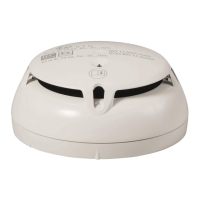
Do you have a question about the Siemens FDOOT241-A9-Ex and is the answer not in the manual?
| Type | Flame Detector |
|---|---|
| Power Supply | 24 VDC |
| Certification | ATEX, IECEx |
| Intrinsically Safe | Yes |
| Detection Principle | Optical |
| Operating Temperature | -25 to +70 °C |
| Output Signal | Relay |
| Ingress Protection | IP66 |
| Protection Class | II |
| Hazardous Area Certification | ATEX, IECEx |
| Field of View | 90° |
| Housing Material | Stainless Steel |
Information on modernizing existing collective Ex detector lines with multiple protocol detectors.
Identifies the intended audience for the information in this document.
Details about the source language, reference version, and document designation.
Explains the structure of the document ID code.
Specifies the date format used in the document.
Explains the special markups and symbols used in the document.
Defines key terms used in the document, such as EMC, EOL, Intrinsically safe, FDnet/C-NET, etc.
Lists documents relevant to the fire alarm signal in areas at risk of explosion.
Provides information on where to download various types of documents via the internet.
Details the history of changes and published language versions of the document.
Explains how multiple protocol detectors can replace existing point detectors on collective Ex detector lines.
Describes the communication capabilities of FDOOT241-A9-Ex and OOH740-A9-Ex detectors.
Outlines the process of modernizing detectors and replacing the fire control panel.
Lists limitations to consider when planning modernization, including device compatibility and topology.
Addresses specific limitations and warnings for replacing intrinsically safe point detectors in explosion risk areas.
Details the steps for modernizing detectors, including base replacement and configuration.
Explains how to switch to a Sinteso detector base when replacing detectors on collective Ex lines.
Describes how to set the detector type using parameter set resistors for replacement.
Lists the tools and methods for testing various detector types.
Explains detector testing procedures for collective Ex detector lines without specific equipment.
Describes how setting detector zones to 'Test' affects collective Ex detector lines.
Outlines the steps for starting up for the first time from collective mode.
Details replacing the control panel or installing a line card for the new protocol.
Recommendations for replacing fire control panels or adding line cards for FDnet/C-NET.
Explains the replacement of peripheral devices like manual call points and alarm indicators.
Provides points to observe when switching collective Ex detector lines to FDnet-Ex/C-NET-Ex.
Outlines the steps for initial startup after changing to FDnet-Ex/C-NET-Ex mode.
Information on configuring multiple protocol detectors using control panel software.